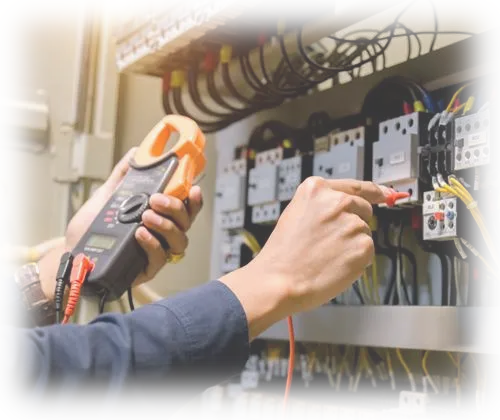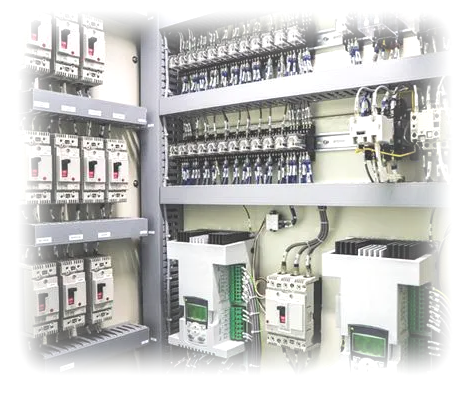An electrical subpanel is a reliable assistant to a main electrical panel. The subpanel distributes the workload by handling specific circuits. The electrical subpanel and the main panel are a dynamic duo that together manage the electrical system.
If you’re not experienced with electrical subpanel installation, grounding, load requirements, testing and electrical codes, consult a licensed electrician. They can provide expert safety advice and have the right tools to perform power calculations. There are critical steps beginners need to know before replacing breakers and other components inside a main breaker panel and subpanel.
Need Subpanels For Your Project?
Get A Subpanel QuoteSell To Us
Got Electrical Equipment You Don't Need?

Reduce Your Electrical Inventories & Earn Cash
Sell My EquipmentPanelboard
Need a Panelboard for Your Project/Job?

Our Experienced Sales Engineers Can Help Design the Right Panelboard For You
Learn MoreTransformer Oil Testing
Is Your Transformer Due For Servicing?

Get Your Oil Analysis & Fluid Testing Done By Our NETA-Certified Techs
Learn MoreElectrical Product Resources
Product Training Product Safety Product Guides Product News Featured ProductsWhat’s Inside an Electrical Subpanel?
Subpanel Enclosure: The subpanel is housed within a metal or plastic enclosure to protect and contain electrical components. Electrical subpanels are mounted on a wall or another surface.
Circuit Breakers: Each circuit has its own dedicated circuit breaker acting as a switch that can be manually turned on or off. Circuit breakers trip and disconnect the circuit if there is an overload, short circuit, or other electrical faults to prevent damage or hazards.
Main Circuit Breaker: The main breaker is a large circuit breaker. It acts as the master switch controlling electricity flow to the subpanel and can turn off power to all the circuits connected to it.
Bus Bars: Metal strips or bars inside the subpanel where circuit breakers are connected. They’re the main electrical conductors, distributing power to individual circuits.
Neutral Bar: a metal strip or bar where the neutral wires from the circuits are connected. The neutral bus bar provides a path for returning electrical current to the main electrical panel.
Ground Bus Bar: Ground wires from the circuits connect here. The ground bar provides a safe path for electrical current if a fault or electrical surge occurs.
Finally, evaluate electrical wiring and conduit to see if it can accommodate the installation of a subpanel. Determine if any upgrades or modifications are necessary to meet electrical safety and capacity requirements.
“Electricity turns darkness into brilliance with a flick of a switch” – Unknown
Load Requirements, Safety Precautions, Subpanel Installation Best Practices
Assess electrical subpanel load requirements by determining the number of circuits needed and power demand to so the subpanel’s size and capacity are right for the intended electrical load. Next, select circuit breakers for an electrical subpanel based on the required amperage for each circuit, the type of circuit (e.g., lighting, power), and follow electrical codes and regulations for proper breaker compatibility and safety. If you need help with testing your breakers and panels, contact a panel repair and testing service.

Wearing appropriate personal protective equipment (PPE), verify voltage absence using a voltage tester. To properly ground an electrical subpanel, connect the subpanel’s ground bar to a dedicated grounding wire that runs to the main grounding system. See that proper connections, use appropriate grounding clamps, and adhere to electrical codes and regulations for safe and effective grounding.
You can avoid overloading electrical subpanel circuits by calculating the total electrical load and amperage requirements of each circuit. Confirm the combined load does not exceed the subpanel’s capacity. Regularly monitor and distribute loads evenly to prevent overload situations and potential electrical hazards.
Electrical Subpanel Mounting Installation Process
When mounting an electrical subpanel, choose a suitable location that allows for easy access and proper ventilation. Use sturdy mounting brackets or straps to secure the subpanel to the wall or surface, ensuring it’s level and meets electrical codes and regulations. Need help choosing a subpanel location?
To connect the main power to an electrical subpanel, turn off the main power supply. Install the appropriate size feeder cable from the main panel to the subpanel. Connect the hot, neutral, and ground wires from the feeder cable to their respective terminals in the subpanel.
When you’re installing breakers into a subpanel, turn off the main power supply. Snap the circuit breakers onto the designated slots in the bus bars. Connect the hot wires to the breaker terminals and the neutral wires to the neutral bar.
When routing and securing wiring for an electrical subpanel, plan the routing paths for each circuit, avoiding excessive bends. Use cable clamps or conduit to secure wiring for support and protection. Label circuits in the subpanel for easy identification by using pre-printed labels or markers to clearly indicate the purpose or location of circuits.

Testing Electrical Subpanel Installation, Connections, Grounding with a Voltage Tester
To verify electrical connections and grounding in an electrical subpanel, visually inspect all connections for tightness and proper alignment. Use a voltage tester to check for voltage presence. Grounding wires should be securely connected to the ground bar. Finally, confirm compliance with electrical codes and regulations. Need help with electrical panel circuit breaker testing?
7 Safety Tips for Subpanel Installation to Avoid Overloads
- Turn off main power supply before working on the subpanel.
- Wear appropriate Personal Protective Equipment (PPE), including safety glasses and insulated gloves.
- Use a voltage tester to verify power is off and circuits are de-energized.
- Follow proper grounding procedures for the subpanel.
- Conform to electrical codes and regulations for breaker selection and installation.
- Avoid overloading circuits by calculating the electrical load and distributing it evenly.
- A licensed electrician should ensure safety and compliance.
Your electrical installation or modifications should be performed by licensed electricians for safety and compliance with electrical codes and regulations.
Electrical Subpanels and Main Panels… a Dynamic Duo
The job of a subpanel should be clearer to you now. Quite simply, an electrical subpanel is like Robin to the main electrical panel’s Batman, lightening the load for the dynamic duo. Together, they manage the electrifying chaos of the electrical system, keeping everything running smoothly.
If you’re planning to replace an electrical subpanel, Relectric stocks new and professionally tested electrical panels and components. Contact one of our sales and service consultants today at 800.497.6255.
